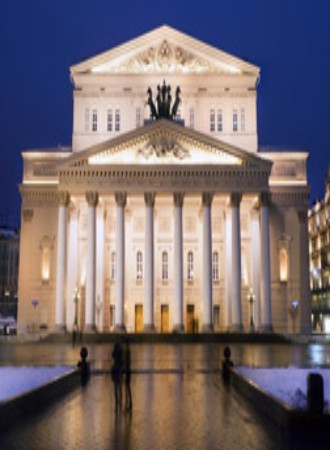
Empire of Dreams: The Bolshoi 1997
Distributed by Films Media Group, PO Box 2053, Princeton, New Jersey 08543-2053; 800-257-5126
Produced by Films for the Humanities and Sciences
Director n/a
VHS, color, 58 min.
High School - Adult
Dance
Date Entered: 11/09/2018
Reviewed by Charles Burkart, Head, Audiovisual Library, West Virginia University, Morgantown, WV
Right from the very beginning, the blurring of art and politics took place at the Bolshoi Theater. While the current Director of the Bolshoi,Vladimir Vasilye, recalls that dictator Joseph Stalin was a "father figure for this temple of art" and that Stalin "did everything for the dancers," Prima ballerina, Maya Pliesetskaya, has a different memory. She was forbidden to dance abroad because her Jewish father was declared "an enemy of the people" The KGB even tried to stop the audience from applauding at her greatest performance because of her "unreliability"
In contrast to the days when Stalin would sit observing the ballet
hidden in a darkened balcony, and singers would be searched coming into
the Bolshoi by the NKVD, the Khrushchev era was much more politically
relaxed and is now considered a golden age. Ballet master, Gregerovich,
changed the Bolshoi's style from romantic ballet on points to a new
intense structure of dance based on a dramatic or heroic storyline. The
premier ballet of this era, choreographed by Gregerovich, was
Gregerovich, who remained chief choreographer and ballet director until
the 1990s, was unable to repeat his early successes and his later works
(Shostakovich's
Today the Bolshoi is in both financial and artistic trouble as many of its best dancers, like Godunov and Derevianko, have gone to the west. The 2500 employees of the Bolshoi no longer have secure employment and many of the 240 dancers, the largest troupe in the world, work elsewhere in addition to the Bolshoi.
Will current ballet choreographer, Gordeiev, be able to reinvigorate the
Bolshoi by combining classical esthetics with modern values? A short
excerpt from the new Bolshoi production,
This is an interesting and rewarding documentary. The mixture of
performance excerpts, interviews and archival film footage works well in